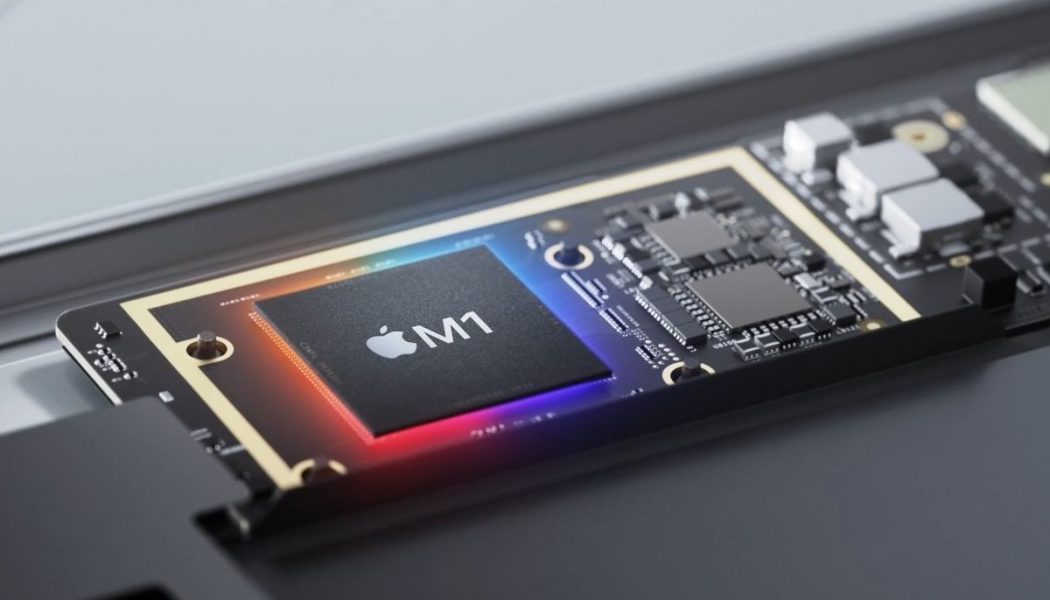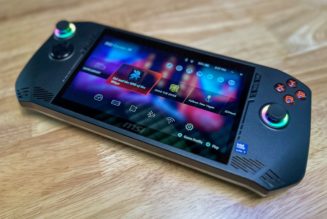Apple has finally introduced its first Macs with processors it designed itself: a 13-inch MacBook Air, a 13-inch MacBook Pro, and a Mac mini. Apple is promising significant performance benefits over Intel processors and, for the laptops, a huge increase in battery life. (To give you an idea of the level of improvement Apple is touting, Apple claims the new MacBook Pro can get up to 20 hours of battery life.)
They’ll also be able to natively run iOS apps, meaning Macs will theoretically have a lot more software options right from the jump. But before you turn those exciting promises into a preorder, you should know there’s still a big question mark hanging over the new computers.
:no_upscale()/cdn.vox-cdn.com/uploads/chorus_asset/file/22029946/apple_m1_board.jpg)
The reason they can natively run iOS apps is because the new Apple M1 is based on the Arm instruction set, just like your smartphone, instead of the x86-64 instructions used in Macs and Windows PCs. But the reverse is also true: we’re currently taking Apple’s word that existing Mac apps will work well when they don’t run natively. Yesterday’s was the second presentation in a row where we saw canned demos and unlabeled graphs instead of actual benchmarks and performance comparisons.
We know what we’re getting with Intel. With Arm, we don’t. And while there are good reasons to think Apple has figured it out, history hasn’t always been kind to other manufacturers who have tried Arm-based computers.
Back in 2012, Microsoft launched an Arm-based version of its new-at-the-time Surface tablet, dubbed the Surface RT. It was a thin computer / tablet hybrid, and at $499, it seemed like a promising new Arm-based device.
:no_upscale()/cdn.vox-cdn.com/uploads/chorus_asset/file/14485265/microsoft-surface-logo-stock_1020.1419979984.jpg)
Confusingly, though, the Surface RT didn’t run the also-new-at-the-time Windows 8. Instead, it ran Windows RT, which was a stripped-down version of Windows 8 that couldn’t run traditional Windows programs. Even Microsoft support reps had trouble explaining what would and wouldn’t work on Windows RT. That confusion probably contributed to the Surface RT’s eventual failure. In its fiscal Q4 2013 earnings, Microsoft recorded a $900 million loss because of Surface RT “inventory adjustments.”
The Surface RT’s failure didn’t stop Microsoft from making more runs at Arm-based Surface computers, though. The company released the Surface Pro X last year, which has an Arm processor co-developed by Microsoft and Qualcomm. We thought the hardware looked great, and once again, the Arm processor let Microsoft make it thinner than the Intel-powered Surface Pro. But while Windows itself was well-optimized for Arm, many apps were slower than they would be on an Intel computer and some didn’t work at all.
Tom Warren found that a newer second-generation Surface Pro X had fewer app compatibility issues than the original, but some apps still didn’t work, including Adobe’s Creative Cloud (with Photoshop and Lightroom).
:no_upscale()/cdn.vox-cdn.com/uploads/chorus_asset/file/20075330/cfaulkner_200708_4091_0004.0.jpg)
It’s not just Microsoft that has struggled with Arm-based computers. Samsung released the Surface-like Galaxy Book 2 in 2018, but you likely won’t be shocked to hear that The Verge’s Dan Seifert had problems running certain apps. My colleague Cameron Faulkner ran into similar issues while reviewing the Lenovo Flex 5G in July. Microsoft is still working to improve Windows’ app compatibility on Arm with x64 emulation. We’re optimistic, but we’re not close to recommending Windows on Arm over Windows on Intel options. And while budget Google Chromebooks can often run perfectly well on Arm, most have adopted Intel and AMD these days.
Apple seems extremely confident in its transition to Arm-based processors, though. Apple has already removed all Intel-based MacBook Airs from its product lineup — despite introducing a new Intel-based Air back in March. While Microsoft, Lenovo, Samsung, and others have always offered a choice between Arm and Intel, Apple expects to transition the whole Mac product line to Apple silicon in about two years.
The company’s sending a clear message that Arm is the future of Mac, and big software companies like Microsoft and Adobe are already listening: Photoshop is coming next year, Lightroom is coming next month, and Microsoft Office is on the way. Other developers who want to make Mac apps are also going to have to get on board.
Apple may be able to avoid some of the same app-compatibility traps other manufacturers have run into. Microsoft, for example, badly assumed developers would embrace its Windows Store by releasing universal apps that would work across both Arm and Intel. That’s an option for Apple developers, too, but the company also has its Rosetta 2 that can translate apps designed for Intel chips to Arm when you first install them, or on the fly afterward if necessary. Apple says some Intel apps can even run faster on its new chip that way, at least compared to the Intel chips in its previous-gen Macs.
And again, M1 is able to run the vast library of iOS apps natively, giving users access to a huge potential volume of functional apps — though you’ll need to sling a pointer around because the Macs don’t have a touchscreen.
I’m very interested to see if these new Macs are as good as Apple promises they’ll be, as I think I’m going to be in the market for a new Apple laptop soon. My personal Mac is an early 2014 11-inch MacBook Air. I love it, but it’s starting to chug on basic internet browsing and the battery can’t hold a charge for much more than an hour or two.
If the new MacBooks are as capable as Apple says they are and can run most apps without much issue, they might be hard for me to pass up. The MacBook Air, in particular, caught my eye, as I currently use my old MacBook Air mostly for surfing the web and writing.
But if there are just as many app-compatibility issues as other Arm-based computers have run into, I might try to squeeze another year out of my beloved personal machine and wait for developers to catch up. I wouldn’t consider an Intel-based Mac anymore, though, as Apple seems fully committed to this transition to its own silicon.










